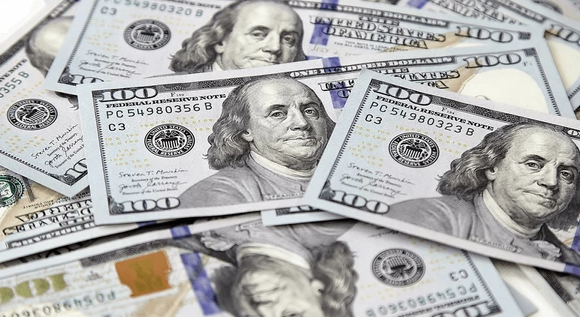Important Information
This website is managed by Ultima Markets’ international entities, and it’s important to emphasise that they are not subject to regulation by the FCA in the UK. Therefore, you must understand that you will not have the FCA’s protection when investing through this website – for example:
- You will not be guaranteed Negative Balance Protection
- You will not be protected by FCA’s leverage restrictions
- You will not have the right to settle disputes via the Financial Ombudsman Service (FOS)
- You will not be protected by Financial Services Compensation Scheme (FSCS)
- Any monies deposited will not be afforded the protection required under the FCA Client Assets Sourcebook. The level of protection for your funds will be determined by the regulations of the relevant local regulator.
Note: Ultima Markets is currently developing a dedicated website for UK clients and expects to onboard UK clients under FCA regulations in 2026.
If you would like to proceed and visit this website, you acknowledge and confirm the following:
- 1.The website is owned by Ultima Markets’ international entities and not by Ultima Markets UK Ltd, which is regulated by the FCA.
- 2.Ultima Markets Limited, or any of the Ultima Markets international entities, are neither based in the UK nor licensed by the FCA.
- 3.You are accessing the website at your own initiative and have not been solicited by Ultima Markets Limited in any way.
- 4.Investing through this website does not grant you the protections provided by the FCA.
- 5.Should you choose to invest through this website or with any of the international Ultima Markets entities, you will be subject to the rules and regulations of the relevant international regulatory authorities, not the FCA.
Ultima Markets wants to make it clear that we are duly licensed and authorised to offer the services and financial derivative products listed on our website. Individuals accessing this website and registering a trading account do so entirely of their own volition and without prior solicitation.
By confirming your decision to proceed with entering the website, you hereby affirm that this decision was solely initiated by you, and no solicitation has been made by any Ultima Markets entity.
I confirm my intention to proceed and enter this website Please direct me to the website operated by Ultima Markets , regulated by the FCA in the United KingdomWhat Countries Dropped the US Dollar?
Countries that dropped the US dollar in trade include Russia, China, India, Iran, and Brazil. This de-dollarisation trend is driven by US sanctions, rising dollar risk, and the shift toward local currency settlements in energy and commodities.

What is De-Dollarisation?
De-dollarisation refers to the process where countries reduce their reliance on the US dollar for international trade, reserves, and financial settlements. It’s a response to geopolitical tensions, sanctions, and the desire for greater monetary sovereignty. Countries pursuing de-dollarisation often switch to local currencies, regional alternatives, or gold for trade settlements.

Full List: What Countries Are Dropping the US Dollar?
As of 2025, several major economies have started shifting away from dollar-centric trade. While most haven’t fully dropped the dollar, they are reducing its use in specific areas like energy, bilateral trade, and central bank reserves.
China
China has actively promoted the yuan in energy and commodity trade. In 2023, it began settling LNG imports from the UAE and oil from Saudi Arabia in yuan. The “Petroyuan” has gained traction through the Shanghai International Energy Exchange (INE).
Russia
Following US and EU sanctions in 2022, Russia accelerated de-dollarisation. It shifted energy exports to rubles and yuan, especially with China, India, and Turkey. The Bank of Russia also cut US Treasury holdings from its reserves.
India
India launched rupee-based trade settlement mechanisms with countries like Russia and Sri Lanka. It signed several bilateral agreements to bypass the dollar in trade invoicing.
Brazil
In 2023, Brazil and China agreed to settle trade in yuan and reais. Brazil’s central bank also diversified away from the dollar in its reserve composition.
Iran
Sanctions pushed Iran to trade using the Chinese yuan, euro, and even barter deals. It no longer uses the US dollar for oil exports.
Argentina
Amid a currency crisis, Argentina used yuan for IMF debt payments and Chinese imports in 2023–2024.
United Arab Emirates (UAE)
The UAE conducted LNG deals with China in yuan and is exploring more non-dollar arrangements through BRICS coordination.
South Africa
As a BRICS member, South Africa has expressed interest in reducing dollar reliance, especially in regional trade.
Turkey
Turkey increased lira-based trade with Russia and China, though the US dollar still dominates its financial system.
None of these countries have completely dropped the dollar, but their gradual shift marks a significant trend in global finance.
Reason Behind De-Dollarisation
De-dollarisation is not a political slogan. It’s a strategic move by countries aiming to protect their economies from external risks. Here are the key reasons driving this shift away from the US dollar:
US Sanctions and Dollar Weaponization
The US dollar’s dominance gives Washington influence over global finance through tools like SWIFT restrictions and sanctions. Countries like Russia, Iran, and Venezuela have faced asset freezes and trade barriers due to dollar-based sanctions. To reduce vulnerability, they are replacing the dollar with local currencies, gold, or alternative systems.
Financial Sovereignty and Independence
Relying on the dollar ties countries to US monetary policy and exposes them to interest rate cycles and capital flow volatility. By reducing dollar use, nations like China and India gain more control over their currency, trade terms, and financial system.
Geopolitical Realignment and Multipolar Trade
As BRICS and other regional alliances grow stronger, member countries are choosing to trade in local currencies to strengthen bilateral ties and reduce dependency on Western systems. For example, China-Brazil, India-Russia, and UAE-China trades are increasingly settled in yuan or local units.
US Debt Concerns and Dollar Stability Risks
The US national debt crossed $34 trillion in 2025. Excessive debt and continued fiscal deficits raise long-term concerns about the dollar’s stability. This prompts central banks to diversify reserves into gold, euro, yuan, and other assets.
Surging Demand for Gold and Neutral Assets
Many central banks are turning to gold as a neutral, non-political reserve asset. In 2023, central bank gold purchases hit a record 1,037 tonnes, a clear sign of hedging against dollar risk and inflation.

How Will De Dollaraisation Affect the Economy?
De-dollarisation will reshape parts of the global economy, particularly in trade, reserve management, currency markets, and monetary policy. Its effects are gradual, but already visible in emerging market strategies and central bank behavior.
Reduced Global Demand for US Dollars
As more countries settle trade in local currencies, demand for the US dollar in global transactions may decline. Since over 80% of global trade is still invoiced in dollars (as of 2024, per BIS), even a small shift can affect dollar liquidity, exchange rates, and Treasury demand.
Impact:
- The US may face higher borrowing costs if foreign central banks reduce dollar reserve holdings.
- The dollar index (DXY) may weaken gradually over time, creating ripple effects in commodities and FX markets.
Monetary Policy Flexibility for Emerging Markets
Countries moving away from dollar reliance gain more autonomy over interest rates, capital controls, and currency management. For example, India and Brazil using local currencies for trade makes them less exposed to US Federal Reserve rate hikes.
Impact:
- Greater financial sovereignty for non-Western economies
- Lower risk of imported inflation via dollar fluctuations
More Volatile and Fragmented Global System
A multipolar reserve system where currencies like the yuan, euro, rupee, and gold compete with the dollar can introduce transaction inefficiencies and volatility.
Impact:
- Higher exchange rate risk for cross-border trade
- Need for new infrastructure (e.g., currency swap lines, clearing systems)
Shift in Reserve Assets and Safe Havens
As central banks diversify away from US Treasuries, demand rises for gold, IMF SDRs, and even commodity-linked currencies. This reduces the dollar’s traditional role as the sole safe haven.
Impact:
- Stronger gold reserves across Asia, BRICS, and the Middle East
- Lower global reliance on US economic cycles
How Does De Dollarisation Affect Gold?

De-dollarisation has a bullish impact on gold, both fundamentally and technically. Here’s how and why:
Gold Replaces the US Dollar as a Reserve Asset
As countries reduce their dependence on the US dollar, many are turning to gold as a neutral, non-sanctionable asset. Central banks especially in China, Russia, Turkey, and India are buying gold to diversify their foreign reserves. In 2023 alone, central bank gold purchases exceeded 1,000 tonnes, the highest annual level in modern history, according to the World Gold Council.
Gold Becomes a Hedge Against Dollar Risk
The more countries move away from the dollar, the greater the perceived risk in holding dollar-denominated assets. This boosts demand for gold as a store of value, particularly during times of currency volatility, inflation, or geopolitical conflict.
Rising Demand from BRICS and Global South
BRICS nations, many of which are actively pursuing de-dollarisation, have increased gold accumulation as part of their monetary diversification strategy. Their growing influence in global trade could lead to more gold-backed or commodity-linked trade mechanisms.
Investor Sentiment Follows Central Banks
When major central banks accumulate gold, it sends a signal to private investors that gold remains a trusted hedge. As de-dollarisation accelerates, gold sees inflows from both institutional and retail markets.
Does De-Dollarisation Affect Forex?
Yes. Forex markets are directly impacted Yuan, Ruble, and Rupee pairs gain liquidity in regional corridors. Volatility rises as countries shift away from predictable USD-based trade flows. Central bank interventions may increase as countries manage their local currency appreciation or depreciation.
For traders, this means watching currency correlations is more crucial than ever especially during geopolitical risk events or commodity price shocks.
Is De-Dollarisation Good or Bad?
There’s no one-size-fits-all answer:
- Good for emerging markets: More autonomy and reduced US leverage.
- Risky for global stability: Fragmented currency systems can lead to inefficiencies and volatility.
- Neutral for now: The dollar remains dominant, but the long-term trend is clear—multi-currency trade is rising.
Conclusion
De-dollarisation is reshaping global trade, reserve flows, and currency markets. While the US dollar still dominates, the gradual shift toward local currencies and gold is creating both risks and opportunities for traders.
At Ultima Markets, we help you stay ahead of these macroeconomic shifts with real-time market analysis, multi-currency trading platforms, and expert insights tailored to evolving global trends. Whether you’re trading gold, forex, or commodities impacted by de-dollarisation, Ultima Markets gives you the tools to make smarter, data-driven decisions.
Disclaimer: This content is provided for informational purposes only and does not constitute, and should not be construed as, financial, investment, or other professional advice. No statement or opinion contained here in should be considered a recommendation by Ultima Markets or the author regarding any specific investment product, strategy, or transaction. Readers are advised not to rely solely on this material when making investment decisions and should seek independent advice where appropriate.












